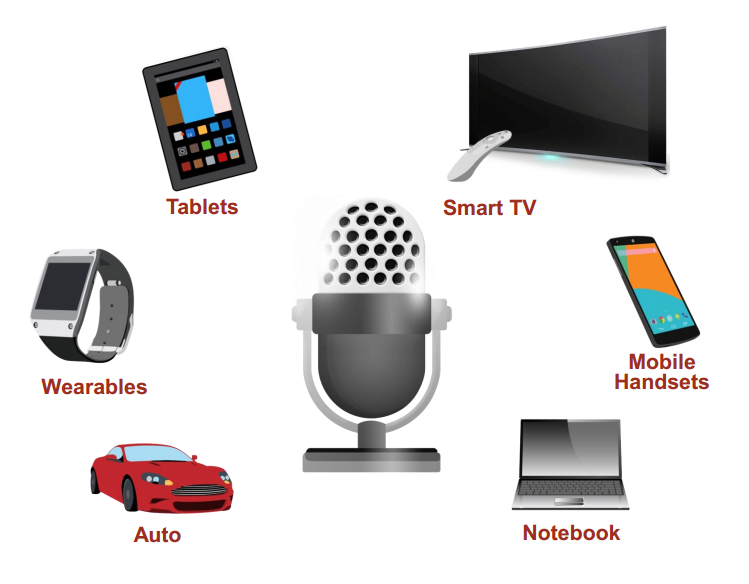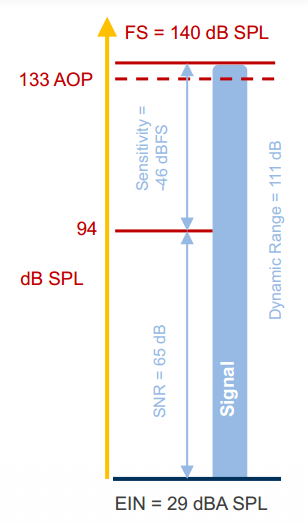Applications and Trends:
Smartphones, tablets, and wearables are continuing to drive more microphone adoption. Emerging applications that are becoming ubiquitous in smartphones and tablets include far field speaker phones, low power keyword spotting, and the ability to record loud sound events while still maintaining high quality (avoiding distortion). Keyword spotting is also applicable to wearables but more importantly is the option of a codec less design via new type of audio interface, I2S. Below explains how InvenSense best-in-class specifications are addressing some of the requirements of these new applications.
SNR – The further away you are from the speaker means there is a greater chance of external noise interfering with the audio quality and clarity. In order to avoid this problem your microphone must have a high signal-to-noise ratio (SNR). The InvenSense 70 dB SNR spec allows you to move almost twice the distance away from the microphone than that of a leading competitor. It will no longer look like you are trying to eat your phone to ensure that the person on the other end hears you properly.
AOP – Ever been to a concert and recorded that one part of your favorite song only to play it back later and have it sound completely distorted? This is also known as sound clipping and is happening because the microphone does not have a high enough acoustic overload point. With a 133 dB SPL AOP InvenSense microphones can record very loud sounds clearly. Most microphones can only reach a level of 120 dB before clipping comes into play.
Low Power – Keyword spotting and voice command are becoming a common feature in smartphones and wearables. In order for the microphone to spot a keyword it must always be on to not miss a beat=. Most microphones today consume over 150 μA @ 1.8 V; InvenSense offers a power consumption of just 16 μA @ 1V making it by far the lowest power in its class.
No More Audio Codec – Typically the audio codec takes in signals from analog or digital microphones and provides audio outputs. The codec communicates with the applications processor via I²S. Some wearable products only a need to handle microphone inputs but don’t require audio out. InvenSense has introduced a new microphone with direct I2S outputs, thus removing the need for an audio codec, saving space, power and cost.



